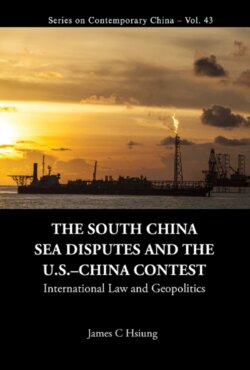Читать книгу South China Sea Disputes And The Us-china Contest, The: International Law And Geopolitics - James Chieh Hsiung - Страница 13
На сайте Литреса книга снята с продажи.
U.S. Support Stiffening the Backbone of China’s Competitors
ОглавлениеThe other reason why the SCS conflicts spiked after 2010 was related to the United States’ “Asia Pivot” policy of the Obama administration, which was cryptically explained as a “rebalancing” policy in Pacific Asia. As the official chiefly responsible for its implementation, Secretary of State Hillary Rodham Clinton demonstrated that it was, in reality, a policy of rallying Asian support in a not so subtle attempt to isolate and contain the (re-)rising China. An opportunity came handy when she attended the regional forum of the Association of Southeast Asian Nations (ASEAN) held in Hanoi, in July 2010. In her address at the forum, Secretary Clinton stressed that the United States, while remaining “neutral” in the disputes over territorial claims, had an “interest in freedom of navigation, open access to Asia’s maritime commons, and respect for international law in the South China Sea.” As the New York Times pointed out, her stance, although presented as an offer to help ease tensions, “amounts to a sharp rebuke to China.”21
Later, my comments on Secretary Clinton’s remarks will surface. But, first, let us not neglect the emboldening effects that her address enunciating America’ stance had on China’s neighbors, as can be seen in their subsequent harsh behavior vis-à-vis China. First, in both 2011 and 2012, the Philippines and China were locked in separate face-offs involving either fishing vessels or warships.22 In one instance, in April 2012, the Philippine warship Gregorio del Pilar was involved in a standoff with two Chinese surveillance vessels in the Scarborough Shoal, an area claimed by both countries.23 What gave additional encouragement to the Philippines was its annual joint naval exercise with the United States, which took place on April 14, 2012, in Palawan, Philippines. Moreover, with U.S. backup and legal assistance, the Philippines took its fight to the Permanent Court of Arbitration (PCA) in the Hague, in 2013, when it filed an application for arbitration in its territorial dispute with China in the SCS (discussed in Chapter 4).
Similar clashes also flared up between Vietnam and China. One such clash took place on May 26, 2011, scarcely 10 months after Secretary Clinton gave her pep talk to members of the ASEAN. It involved a confrontation between the Vietnamese Binh Minh 02 oil and gas survey ship and three Chinese maritime patrol vessels, some 80 miles off the south-central coast of Vietnam. The Vietnamese said the Chinese boats deliberately cut the survey ship’s cables, but the Chinese denied the allegation.24 The event stirred up unprecedented anti-China protests in Hanoi and Ho Chi Minh City, regardless.25
In all fairness, another no less potent contributing factor unrelated to U.S. instigation was a happenstance accruing from the May 13, 2009, deadline by which states parties to the 1982 U.N. Convention on the Law of the Sea (UNCLOS III) had to make seabed hydrocarbon claims under the Convention. It may have caused dormant island claims to surface and become inflamed, leading to the intensification of the SCS disputes and associated tensions between China and its competing claimants.26 The United States, which is not a claimant, simply weighed in, as Secretary Hillary Clinton exemplified, to exploit the opportunity for rallying Asian support to help fulfill its geopolitical goal of balancing against China.
